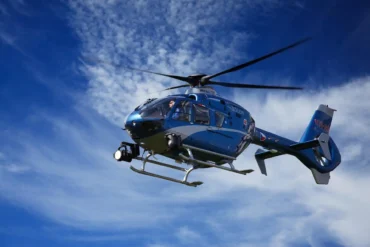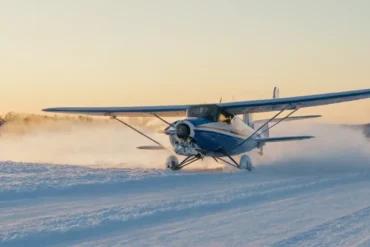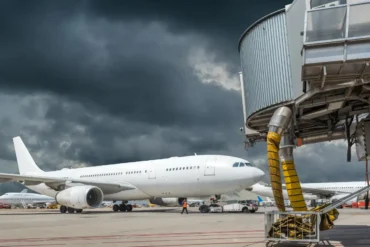Whether helicopters can fly in the rain is more complex than a simple yes or no. The rain primarily affects visibility for pilots rather than the helicopters themselves. Let’s explore how rain impacts helicopter flights and how pilots handle poor weather.
The main issue with rain is that it reduces visibility, especially during takeoff and landing. Most helicopters lack sophisticated avionics and rely on the pilot’s vision for navigating. With raindrops blurring the windshield, pilots have a tougher time steering clear of obstacles like buildings and power lines.
Rain can also lower cloud ceilings, forcing helicopters to fly at dangerously low altitudes. This increases the risk of crashing into terrain or manmade structures. Uneven cloud layers hidden in valleys pose a substantial threat as well, often leading to fatal accidents.
Larger helicopters with auto-pilot can safely navigate clouds thanks to instrument approach systems and runway lighting. These aids guide pilots when visibility is poor. Busy heliports rely on these technologies during downpours.
Pilots avoid thunderstorms and hazards like hail, lightning, and tornados. These not only reduce visibility but risk damaging the aircraft. It’s safest to wait out extreme weather on the ground until conditions improve.
While rain itself doesn’t restrict flight, freezing rain introduces a new set of risks.
How Freezing Rain Impacts Helicopters
Freezing rain remains liquid even below 32°F in a “supercooled” state. Upon hitting the aircraft, these droplets freeze instantly. Prolonged exposure coats the blades and windshield in ice, increasing drag and reducing lift.
The extra weight also hampers performance, making taking off or continuing flight difficult. Iced engine intakes could break apart and get sucked in, leading to disastrous engine failure.
While airplanes can be sprayed with deicing fluid, most helicopters can’t use chemicals due to potential long-term damage. Removing existing ice before takeoff is crucial, along with preventing further buildup.
Even with advanced anti-icing capabilities on larger helicopters, ice accumulation reaching certain levels forces pilots to turn around. Altered rotor blade shape demands more engine power to keep spinning against the added drag. If RPM drops too low, crash risks spike.
How Pilots Handle Icy Weather
Pilots carefully study weather reports to avoid freezing rain when possible. In flight, they may change altitude or route to steer clear of icy conditions. Landing and waiting for clearing skies is also an option. Having covers ready to shield blades upon landing helps.
Real-time pilot reports provide accurate details on current freezing rain locations to enhance routing. Instrument-rated pilots in IFR-equipped helicopters can dodge cloud layers prone to icing. Helicopters’ versatility in changing altitude and route makes avoiding hazards easier than for airplanes.
Overall, helicopters can operate in rain if pilots remain vigilant. But freezing rain introduces major risks that warrant caution. Careful planning, smart routing, and waiting out extreme weather are key to safe helicopter flights.


















